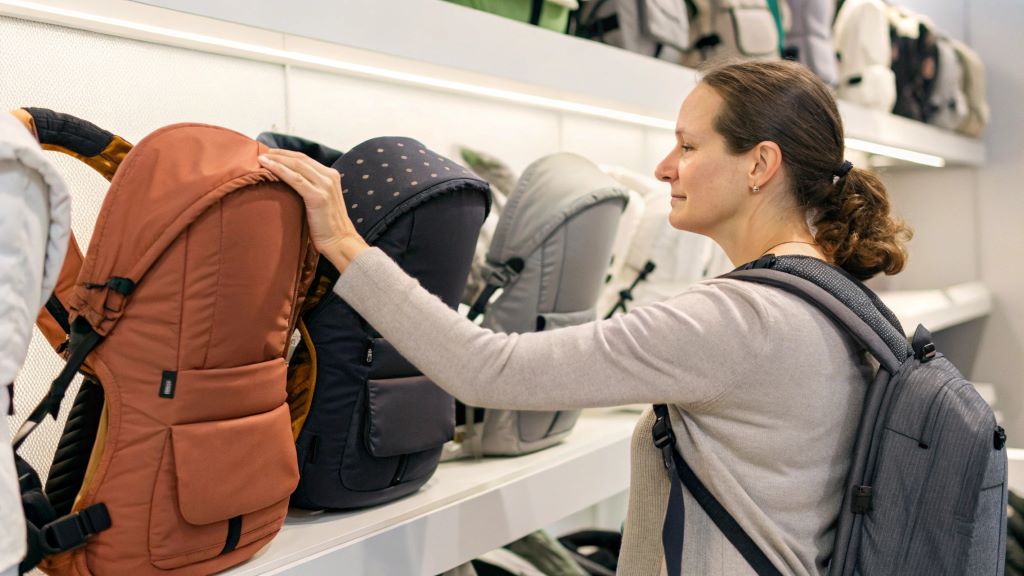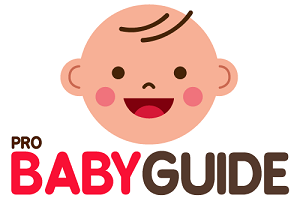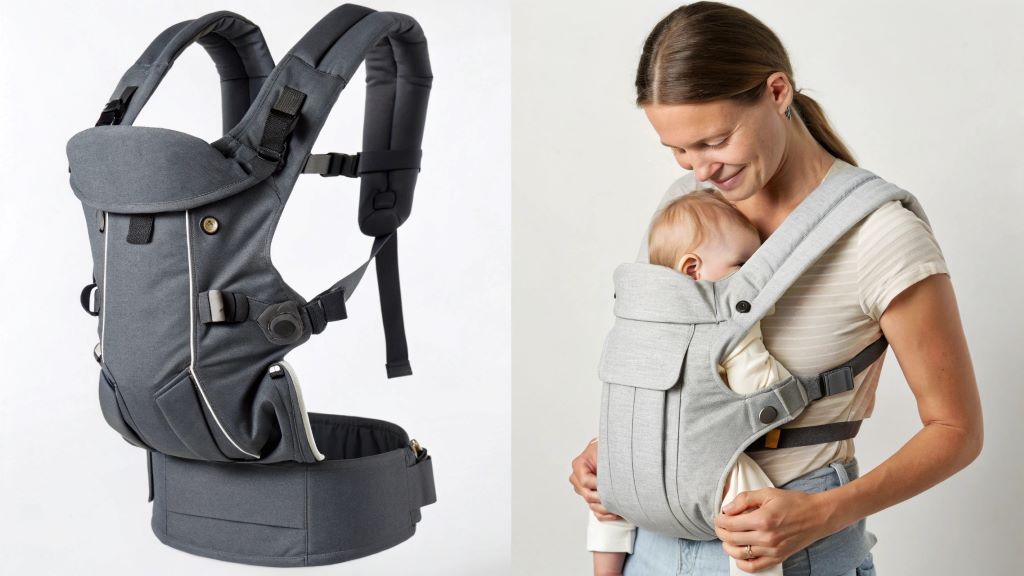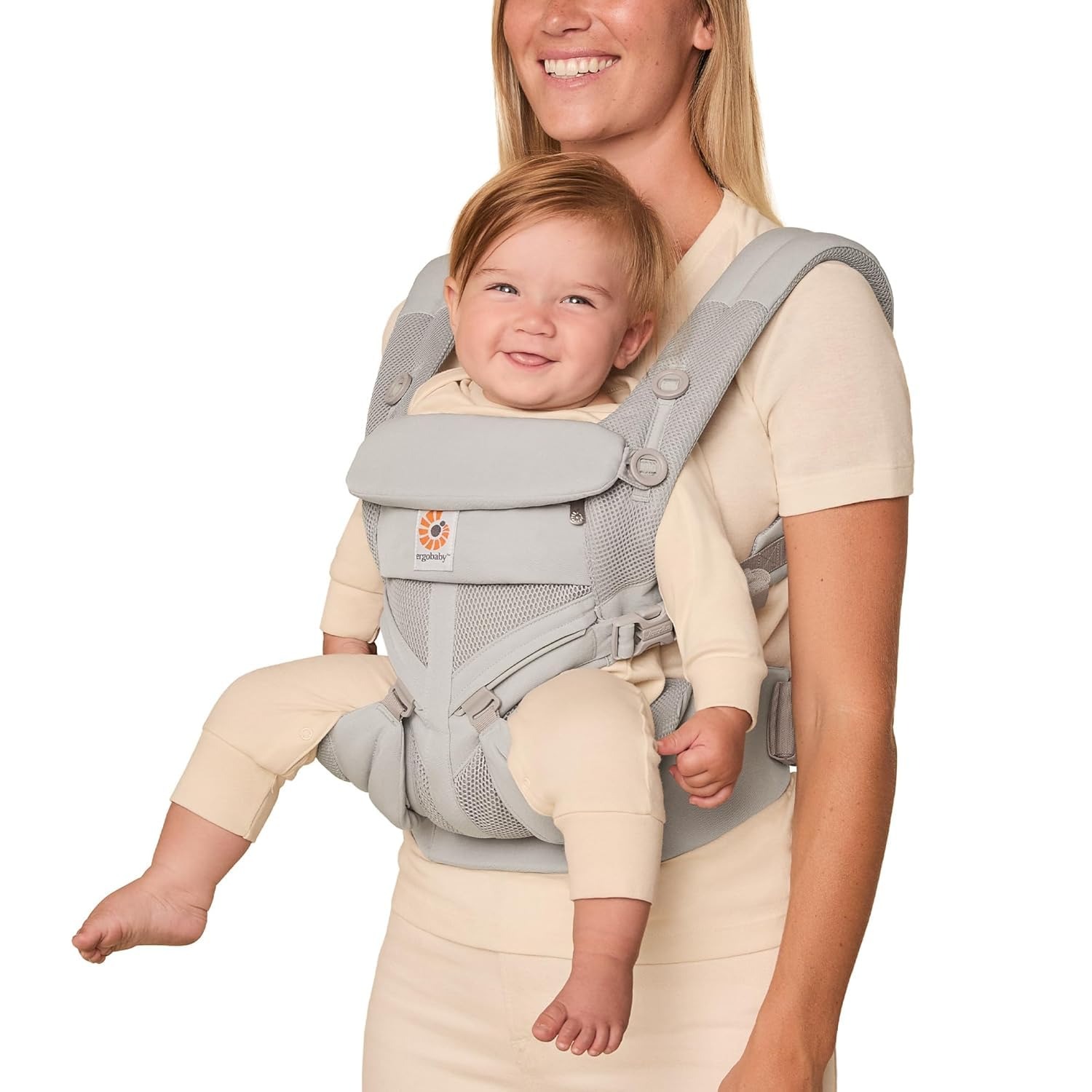When I welcomed my first child, the world of baby carriers felt overwhelming. Standing in a store, I stared at rows of Ergobaby and BabyBjörn carriers, unsure which was best for my newborn. The stakes felt high—comfort, safety, and ease of use mattered. If you’re a new parent facing the same dilemma, this guide compares Ergobaby vs BabyBjörn for newborns, weaving my personal journey with practical insights. We’ll explore features, benefits, and drawbacks to help you choose the right carrier. By the end, you’ll feel confident in your decision. Let’s dive into the cozy world of babywearing and find the perfect fit for you and your little one.
Why Baby Carriers Matter for Newborns
Baby carriers are a lifeline for new parents. They keep your newborn close, fostering bonding while freeing your hands. For newborns, carriers provide a womb-like environment, promoting calm and security. According to the International Hip Dysplasia Institute, hip-healthy carriers support proper leg positioning, crucial for developing joints. Both Ergobaby and BabyBjörn excel here, but their approaches differ. My daughter, Mia, loved being snuggled against me, and a carrier let me tackle chores while she napped. However, choosing the wrong carrier can lead to discomfort or safety issues. This section explores why carriers are essential and how Ergobaby and BabyBjörn cater to newborns’ unique needs, ensuring you make an informed choice.
Ergobaby Embrace: A Cozy Haven for Newborns
The Ergobaby Embrace is designed with newborns in mind, offering a soft, wrap-like feel with structured support. Suitable for babies from 7 to 25 pounds, it requires no infant insert, simplifying use. Its knit fabric feels gentle, and the adjustable waistband distributes weight evenly. I found the Embrace easy to put on, even solo, thanks to its intuitive design. The carrier supports the ergonomic “M” position for hip health, endorsed by the International Hip Dysplasia Institute. However, it lacks a forward-facing option, which some parents miss as babies grow. For me, the Embrace was a game-changer during Mia’s reflux phase, keeping her upright and content. It’s ideal for parents seeking simplicity and newborn-specific comfort.
BabyBjörn Mini: Simplicity and Snug Fit
The BabyBjörn Mini is a lightweight, user-friendly carrier for newborns from 7 to 24 pounds. Its minimalist design makes it a breeze to put on, perfect for quick trips. The adjustable head support cradles fragile necks, and the soft cotton or mesh fabric feels cozy. I borrowed a Mini from a friend and loved its snug fit for Mia’s early weeks. It supports knee-to-knee positioning, vital for hip health. However, it offers less lumbar support than Ergobaby, which I noticed during longer walks. The Mini shines for short outings but may not suit extended wear. If you value ease and a compact design, the BabyBjörn Mini is a strong contender for newborn babywearing.
Comparing Key Features for Newborns
Choosing between Ergobaby and BabyBjörn for newborns hinges on specific features. Both prioritize safety and comfort, but their designs cater to different needs. Here’s a detailed comparison to guide your decision:
- Weight Range: Ergobaby Embrace (7–25 lbs) vs. BabyBjörn Mini (7–24 lbs)—nearly identical.
- Hip Health: Both are certified hip-healthy by the International Hip Dysplasia Institute.
- Ease of Use: BabyBjörn Mini is simpler to put on; Ergobaby requires slight practice.
- Comfort: Ergobaby’s waistband offers better weight distribution; Mini feels lighter but less supportive.
- Fabric: Ergobaby’s knit is softer; BabyBjörn offers cotton or breathable mesh.
- Positions: Both are inward-facing only, ideal for newborns.
- Price: BabyBjörn Mini is slightly cheaper, but Ergobaby offers longer usability.
These differences shaped my choice, and they’ll help you too.
Benefits of Ergobaby for Newborns
The Ergobaby Embrace offers distinct advantages for newborns and parents. Here are key benefits:
- Soft, Wrap-Like Feel: The knit fabric mimics a wrap’s coziness, soothing newborns.
- No Insert Needed: Ready for babies from 7 pounds, simplifying setup.
- Ergonomic Design: Supports the “M” position, promoting hip health.
- Adjustable Fit: Crossable straps and waistband suit various body types.
- Breastfeeding-Friendly: Easy to adjust for discreet nursing.
- Portable: Rolls up compactly for diaper bags.
I loved how the Embrace let me nurse Mia on the go, and its portability was a lifesaver for travel. However, the lack of a forward-facing option might limit its use as your baby grows curious. For newborn-focused parents, these benefits make Ergobaby a top choice.
Benefits of BabyBjörn for Newborns
The BabyBjörn Mini shines for its simplicity and newborn-specific design. Here are its key benefits:
- Lightweight Design: At just 1 pound, it’s easy to carry and wear.
- Quick Setup: Intuitive buckles make it ideal for busy parents.
- Snug Fit: Adjustable head support ensures newborns feel secure.
- Breathable Options: Mesh version keeps baby cool in warm climates.
- Hip-Healthy: Supports knee-to-knee positioning for joint development.
- Stylish Colors: Appeals to fashion-conscious parents.
I appreciated the Mini’s quick setup when dashing to the store with Mia. Its lightweight feel was perfect for short outings. However, its limited lumbar support made longer wears less comfortable. If you prioritize ease and style, the BabyBjörn Mini is an excellent pick for newborns.
Common Mistakes to Avoid When Choosing a Carrier

Selecting a carrier can be tricky, and mistakes can affect comfort and safety. Here are common pitfalls to avoid:
- Ignoring Weight Limits: Ensure the carrier suits your newborn’s size (7+ lbs for both brands).
- Skipping Instructions: Always read manuals to Sing TICKS method for safe babywearing.
- Choosing Bulky Models: Avoid overly structured carriers for newborns.
- Neglecting Hip Health: Pick hip-healthy carriers like Ergobaby or BabyBjörn.
- Wearing Too Low: Position baby high, at a kissable height.
- Overlooking Comfort: Test for parental comfort during long wears.
- Not Practicing: Practice putting on the carrier before baby arrives.
I made the mistake of wearing Mia too low initially, causing back strain. Learning proper positioning saved us both discomfort. Avoid these errors for a smoother babywearing experience.
Which Carrier Is Right for You?
Deciding between Ergobaby vs BabyBjörn for newborns depends on your lifestyle. If you plan to wear your baby for long periods, Ergobaby’s lumbar support and adjustable straps offer superior comfort. Its soft fabric and breastfeeding ease suited my daily routine with Mia. Conversely, if you need a carrier for quick errands or live in a warm climate, BabyBjörn Mini’s lightweight design and mesh option shine. Its simplicity was perfect for my friend’s short city walks. Consider your body type, baby’s size, and wearing habits. Both are hip-healthy and newborn-safe, so test them if possible.
Tips for Successful Babywearing
Babywearing can be a joy with the right approach. Here are practical tips to enhance your experience:
- Practice Early: Familiarize yourself with the carrier before baby arrives.
- Check Fit: Ensure a snug, high fit for baby’s safety and your comfort.
- Follow TICKS: Tight, In view, Close, Keep chin off chest, Supported back.
- Adjust Straps: Customize fit for your body to avoid strain.
- Start Short: Begin with brief sessions to build confidence.
- Clean Regularly: Wash per manufacturer guidelines to keep it fresh.
- Monitor Baby: Check breathing and comfort during wear.
These tips transformed my babywearing journey with Mia, making it a bonding highlight. Apply them to maximize comfort and safety with either Ergobaby or BabyBjörn.
Read More: How Many Strollers Do You Need: A Comprehensive Buying Guide
Conclusion
Choosing between Ergobaby vs BabyBjörn for newborns is a personal journey, but both offer safe, hip-healthy options. Ergobaby Embrace excels for long wears and breastfeeding, while BabyBjörn Mini wins for simplicity and short trips. My experience with Mia taught me that comfort and ease matter most. Reflect on your needs—long walks or quick errands—and test carriers if possible. A well-chosen carrier fosters bonding and freedom. Share your thoughts or questions in the comments below, or spread this guide to help other parents. Your perfect carrier awaits, ready to cradle your newborn and ease your parenting adventure.
FAQs
Is Ergobaby or BabyBjörn better for newborns?
Both are excellent, but Ergobaby Embrace offers better lumbar support for long wears, while BabyBjörn Mini is simpler for short trips. Choose based on your lifestyle.
Do I need an infant insert for Ergobaby or BabyBjörn?
No, both the Ergobaby Embrace and BabyBjörn Mini are designed for newborns (7+ lbs) without inserts, simplifying use.
Are Ergobaby and BabyBjörn safe for newborn hips?
Yes, both are certified hip-healthy by the International Hip Dysplasia Institute, supporting the ergonomic “M” position for joint development.
Can I breastfeed in an Ergobaby or BabyBjörn carrier?
Ergobaby Embrace is more breastfeeding-friendly due to adjustable straps and no chest barrier. BabyBjörn Mini is less ideal but possible with adjustments.
How do I clean my Ergobaby or BabyBjörn carrier?
Both are machine-washable. Follow manufacturer guidelines: use mild detergent, cold water, and air dry to maintain fabric integrity.
Read More:
Choosing the Perfect Standard Stroller: Key Features to Consider
Best All Terrain Stroller: Discover the Perfect Stroller for Any Adventure!



